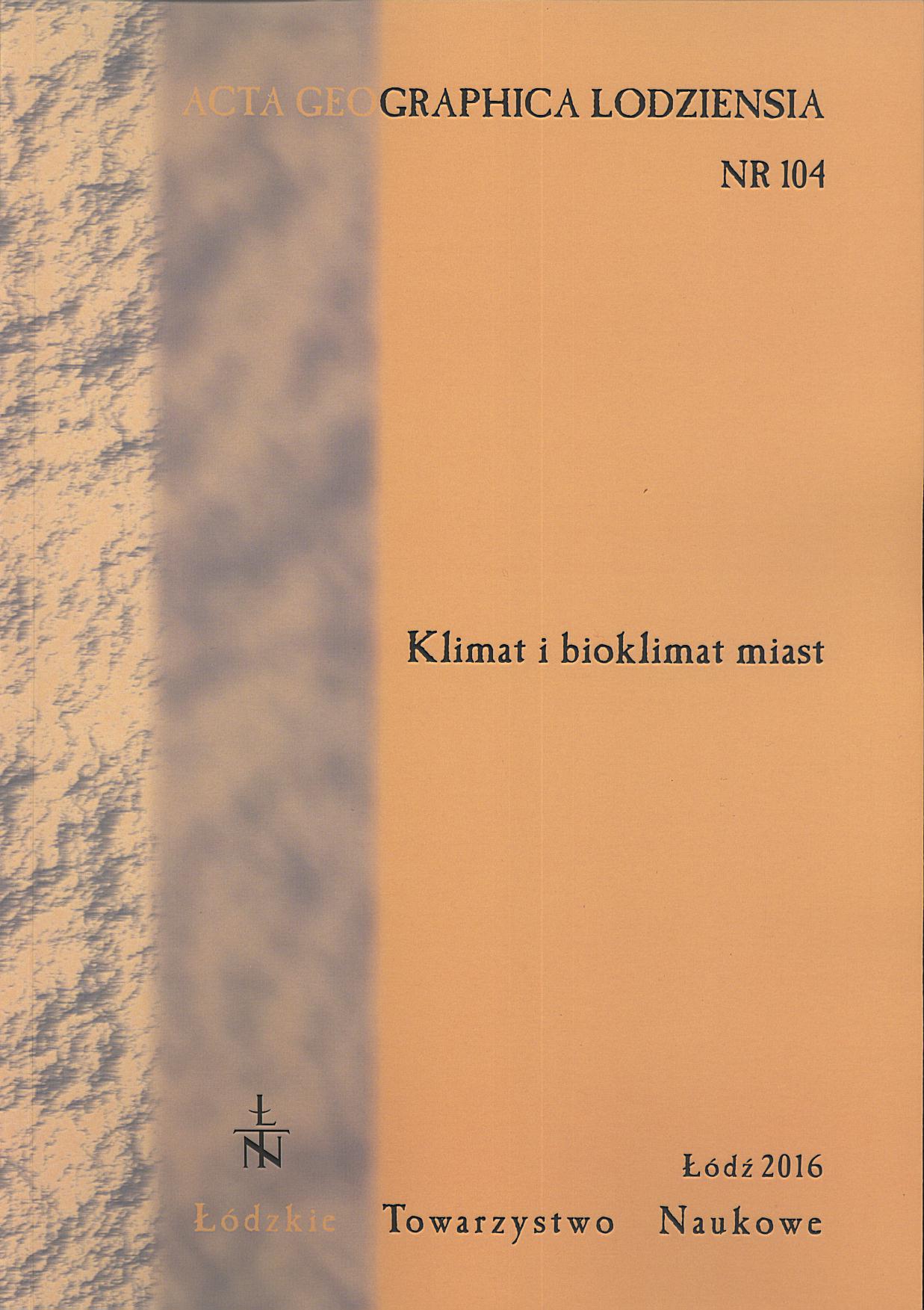Bioklimat wybranych miast pasa Pobrzeży Południowobałtyckich na podstawie uniwersalnego wskaźnika obciążenia cieplnego
Bioclimate of the chosen cities in the Polish Baltic Coast based on Universal Thermal Climate Index
Author(s): Marek Półrolniczak, Katarzyna Szyga-Pluta, Leszek KolendowiczSubject(s): Geography, Regional studies, Environmental Geography
Published by: Łódzkie Towarzystwo Naukowe
Keywords: bioclimate; UTCI index; NCEP/NCAR reanalyses; Poland; coastline
Summary/Abstract: The paper addresses the bioclimatic conditions in selected cities of the Polish Baltic Coast on thebasis of the Universal Thermal Climate Index UTCI (Fig. 1). Moreover, the authors, by using observationaldata from coastline stations, as well as reanalysis data of the mean sea level pressure and the 500hPa geopotential height from the NCEP/NCAR, attempt to explain which synoptic situations are conductiveto the occurrence of days with very strong and extreme cold or heat stress. As extremebiometeorological situations the authors considered those in which the UTCI index at 12 UTC exceededthe value of 32°C (strong, very strong or extreme heat stress) and was lower than –27°C (verystrong and extreme cold stress). The research proved that the lack of thermal stress occurs most frequently(Fig. 2). However, among the days with the aggravating conditions, days with the cold stresscategory appear most frequently. An analysis of the diurnal, seasonal, and annual variability of themean UTCI values in the selected cities was also conducted (Figs 3, 4). The study of long-term trendsshowed a statistically significant increase in the value of the UTCI index in the year and seasons (Fig.5, Tab. 2). An analysis of the days by the UTCI index category trends showed an increase in the numberof days with the conditions of both heat and cold stress in Świnoujście and Łeba, heat stress inKołobrzeg, and cold stress in Hel (Tab. 3). The investigation of the synoptic situations showed that theextremely warm heat stress categories (UTCI > 32°C) occur in the distribution of pressure over Europegenerating the influx of warm air masses from the south. There are two groups of situations responsiblefor such a direction of advection (Figs 6, 7, 8). Extreme cold thermal stress categories(UTCI < –27°C) in the center and east of the Polish coast are caused by three, and in the west of thisarea, by two distinctive types of synoptic situation (Figs 9, 10, 11). The first system causes advectionof cold air from the east. The second type of synoptic situation favors the advection of cold air fromthe north-eastern sector. The third group of synoptic situations with a distinct north-eastern advectionaffects the area of Świnoujście and Kołobrzeg.
Journal: Acta Geographica Lodziensia
- Issue Year: 2016
- Issue No: 104
- Page Range: 147-161
- Page Count: 15
- Language: Polish

